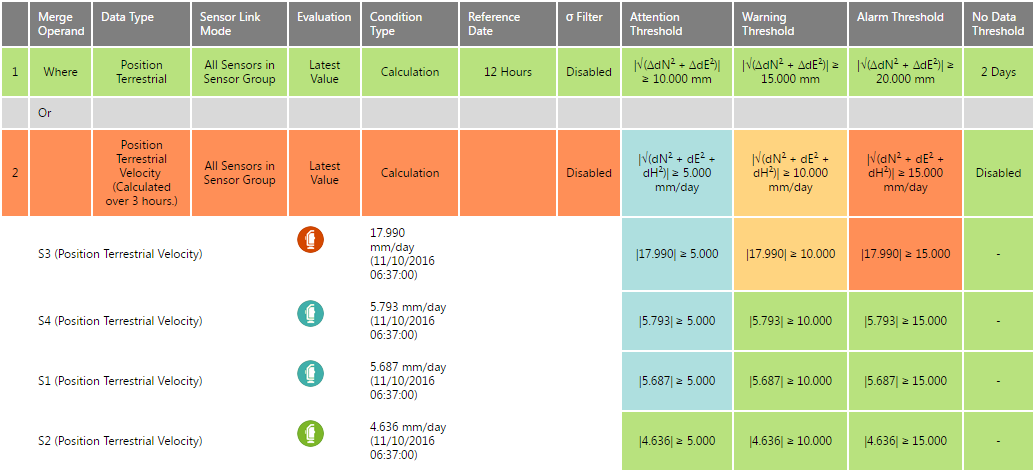How alarm conditions are evaluated
This topic explains how the Alarm alarm state is determined using the configured alarm conditions.
An Alarm State has four severity types: Okay, Attention, Warning or Alarm.
The alarm state is designated at three levels:
-
Alarm Definition Level: The Alarm Definition Level alarm state is calculated using the Alarm Condition Expression.
-
Alarm Condition Level: The Alarm Condition Level alarm state is calculated according to the sensors associated with that alarm condition using the configured Trigger threshold type.
-
Sensor Level: The Sensor Level alarm state is calculated according to the Alarm condition thresholds evaluated against the sensor data.
If more than one type of alarm severity is triggered on a particular level, then that level is assigned the most severe alarm state.

In the example above, under the second alarm condition the Sensor “S3” exceeds the Alarm Threshold (|17.990| ≥ 15.000). The Sensor Level Alarm State for this particular sensor is therefore Alarm.
In the example above, the Alarm State of the second alarm condition is Alarm, because the Trigger threshold type is set to Any and the worst Sensor Level Alarm State is Alarm from Sensor “S3”. (Notice that Sensors “S4” and “S1” have the Sensor Level Alarm State of Attention, which is less severe than Alarm).
In the example above, the Alarm State of the alarm is Alarm, because the alarm condition expression evaluates to Alarm: [Alarm Condition 1] OR [Alarm Condition 2] (OK OR ALARM = ALARM).